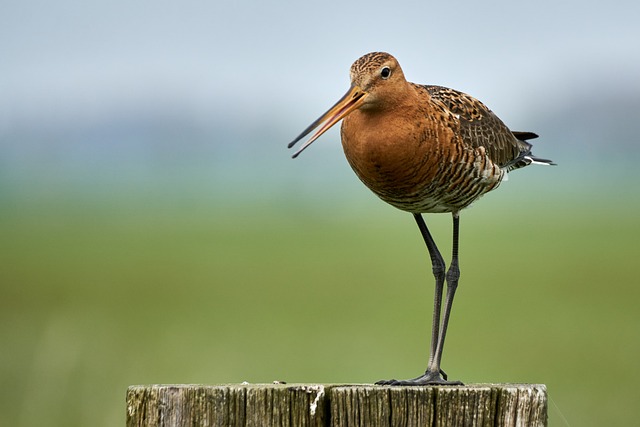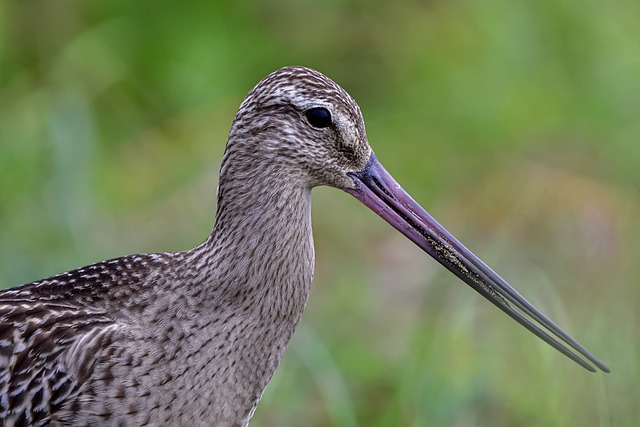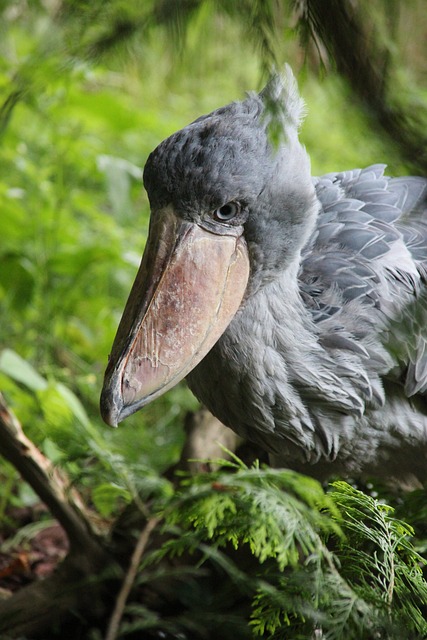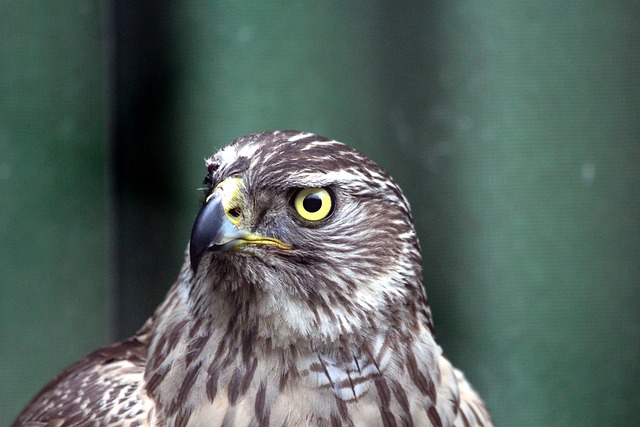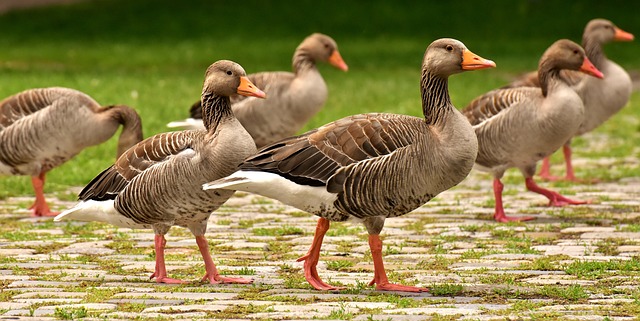The Northern Shoveler, also known as the Common Shoveler, is an interesting species of duck native to North America. It is a medium-sized duck and is easily identifiable by its long, broad bill, bright colors, and distinctive shape.
They live in wetland habitats all across the continent but are especially common in the northern regions.
Introduction
Northern Shovelers are known for their distinct breeding season behaviors, as they fly in large flocks to their preferred habitats and engage in unique courtship rituals. They also possess a number of physical characteristics that set them apart from other ducks, such as their bright colors and bill shape.
When it comes to their diet, the Northern Shoveler feeds mainly on aquatic invertebrates such as aquatic larvae, crustaceans, and mollusks. They hunt and eat in large flocks, and are able to quickly filter small particles out of the water using their specially adapted bill.
The Northern Shoveler breeds mainly during the summer months, where they create nests and lay eggs. During the breeding season, they also engage in a number of unique courtship rituals, such as displaying and stretching their wings, head bobbing, and producing a variety of calls.
The preferred habitats of the Northern Shoveler include marshes, ponds, and shallow lakes. They are known to migrate from their breeding grounds to their wintering grounds in the southern US and parts of Mexico. Unfortunately, their populations are declining due to a number of factors, including habitat destruction and human interaction.
The Northern Shoveler is a species that requires protection, and there are a number of steps being taken to conserve this species and its habitat. There are also a number of things that individuals can do to help protect these ducks, such as creating and protecting wetland habitats and avoiding human disturbances.
Overall, the Northern Shoveler is an interesting species of duck whose behavior, habitat, and physical characteristics make it a fascinating species to observe and learn about. From their bright colors and bill shape to their breeding season behaviors and preferred habitats, the Northern Shoveler is an important species to our environment.
Physical Description
The Northern Shoveler is a medium-sized dabbling duck native to North America. It is easily recognizable due to its colorful plumage and shovel-like bill.
The Northern Shoveler is usually between 16 and 19 inches long, with a wingspan of around 24 to 26 inches. It has a stocky body and a large head. Its bill is long, wide, and spoon-shaped, with a distinctive spatula-like curve at the end. This bill is specialized for feeding on aquatic invertebrates, and is used to strain food items from the water.
The Northern Shoveler typically has a green-headed plumage with a white neck and breast, and a reddish-brown chest. Its wings are dark with light-colored patches on the sides. The bird's tail is grey-brown and its legs are greyish-green. Its eyes are yellow and the male has a purple patch of feathers on its cheeks.
The Northern Shoveler also has two distinctive black and white patches on its wings. These patches help it to identify other shovelers during the breeding season.
The Northern Shoveler is also known for its distinctive call. The male has a loud, nasal quack, while the female has a lower, raspy quack.
Overall, the Northern Shoveler is a striking bird with its colorful plumage and distinctive bill. It is easily recognizable and is a distinctive and important part of wetlands and wetland ecosystems.
Diet
The Northern Shoveler is a dabbling duck with a very distinctive bill shape. It is an omnivorous bird, feeding on a variety of items found in its habitat. They mainly feed on small invertebrates, such as insects, crustaceans, and mollusks.
Northern Shovelers search for food by upending and dabbling in shallow water and through foraging in mudflats, marshes, and shallow ponds. They can also be found sifting through soft mud with their beaks in search of small organisms. This is why they are sometimes known as “mud-probers”.
In addition to invertebrates, Northern Shovelers also feed on aquatic vegetation, such as seeds, stems, and leaves of aquatic plants. They also eat small fish and crustaceans, as well as some grains, such as wheat, oats, and barley.
To feed, the Northern Shoveler will often swim on the surface of the water with its bill submerged. They will scoop up food items with their bill in a sweeping motion. They will then filter the food items that have been collected and swallow them whole.
The Northern Shoveler also uses its bill to strain food items out of the water. They will flick their bill back and forth in the water in order to filter out small food items from the water column. This behavior is known as “billing”.
During the breeding season, the Northern Shoveler will feed more heavily on vegetation. This is because they need more energy to perform courtship and nesting behaviors. This means they will also feed on the seeds and parts of aquatic plants, as well as invertebrates and small fish.
Overall, the Northern Shoveler is an omnivorous bird that eats a variety of items found in its habitat. They mainly feed on small invertebrates, such as insects, crustaceans, and mollusks, as well as aquatic vegetation, small fish, and grains. They use a variety of techniques to find and capture food, such as upending, dabbling, and filtering, and they feed more heavily on vegetation during the breeding season.
Breeding
When it comes to breeding, the Northern Shoveler has its own unique behaviors and rituals. During the breeding season, the male will display a vibrant array of colors and markings. This is done to attract the female, and includes a variety of courtship rituals. The males will then try to convince the female to choose them as her mate.
The Northern Shoveler typically nests on the ground, in grassy or marshy areas. The female will lay up to twelve buff-colored eggs, which she will then incubate for about 24 days. The male Northern Shoveler will typically stay with the female during this time, providing her with food and protection from predators.
The young Northern Shoveler chicks are born with softer, less-developed feathers. They rely on the male to provide them with food for the first few weeks of their lives. The young birds can fly within a few weeks of hatching, and will become independent of the parents soon after that.
The Northern Shoveler’s breeding season varies depending on where they are located. In the Northern Hemisphere, the species typically breeds from late April to mid-July, while in the Southern Hemisphere their breeding season usually runs from November to February.
During the breeding season, the Northern Shoveler can be quite vocal, with both males and females whistling and clucking to each other. They also engage in a variety of courtship behaviors such as preening, bowing, and “dancing”.
To protect their nests from potential predators such as raccoons and skunks, the Northern Shoveler will usually construct their nests in low-lying areas near the water. They will also build the nests in dense vegetation, which provides the birds with more protection and a better chance of successfully raising their young.
Habitat
The northern shoveler, also known as the northern shoveller or spoonbill, is a dabbling duck that can usually be found in wetlands throughout much of North America and parts of Eurasia. These ducks have an unmistakable appearance, thanks to their unique bill shape. They prefer wetlands such as marshes and shallow lakes, as they rely on aquatic vegetation for their food.
During the breeding season, northern shovelers concentrate in the prairie pothole region of North America, which includes parts of the northern Great Plains and the prairie provinces of Canada. Outside of the breeding season, the northern shoveler can be found in wetlands from the Great Basin to the Atlantic coast, and from the Gulf of Mexico to the Canadian boreal forest. These ducks are short-distance migrants, favoring wetlands with abundant aquatic vegetation for food.
The northern shoveler is a common sight in freshwater wetlands during the winter, as these birds are often found in large flocks of other dabbling ducks. These birds also spend time in brackish wetlands and estuaries during migration. In some areas, northern shoveler populations have declined due to habitat loss, hunting, and other human-related activities.
The northern shoveler is a habitat generalist, living in many types of wetlands. During breeding season, these birds prefer shallow wetlands with abundant aquatic vegetation for food and nesting cover. They also use wetlands with deep water for courtship activities and foraging. In winter, they are often found in large flocks in shallow wetlands with abundant aquatic vegetation.
The northern shoveler is a short-distance migrant, often traveling between breeding grounds in the prairie pothole region and wintering grounds in the southern United States. Migration takes place mainly during the night and is often a gradual process, with ducks leaving the breeding grounds over several weeks.
The northern shoveler is an important species for wetland conservation, as it is an indicator species that provides insight into the health of wetlands. Because of this, it is important to protect and restore suitable wetland habitats to ensure the long-term survival of this species.
Conservation
The Northern Shoveler has seen a decrease in its population size due to various factors such as habitat destruction, hunting, and fishing. In order to protect the species, several steps have been taken to ensure its survival.
In many parts of the world, there have been regulations put in place to protect the Northern Shoveler from being hunted or fished so that the population can increase. For example, in Canada, the species is listed as a migratory bird and is protected by the Migratory Birds Convention Act. Furthermore, hunting and fishing of the species is prohibited in all areas of the United States.
The government has also taken measures to conserve the species’ habitats by restoring wetlands and increasing the amount of suitable breeding grounds. This has been done through various initiatives, such as The North American Waterfowl Management Plan, which is designed to conserve and protect wetlands in the U.S, Canada, and Mexico.
Conclusion
The Northern Shoveler is a unique species of duck that is quite distinctive due to its colors and shape. It can be found in a variety of wetlands, and its breeding season happens in the spring in most areas. It primarily feeds on aquatic insects, small fish, and other invertebrates.
The Northern Shoveler is in danger of becoming extinct due to loss of habitat and other potential threats. Conservationists and organizations are working hard to conserve the species and its habitat. There are also many ways that people can help preserve the species, such as joining conservation efforts, reporting potential threats, and visiting protected areas.
In conclusion, the Northern Shoveler is a unique and fascinating species of duck with a wide range of behaviors and habitats. Its physical description is distinctive, and its diet consists of various aquatic insects. As the species faces potential threats, conservation is essential for its survival. With collective efforts, we can all be part of the solution in preserving it.


